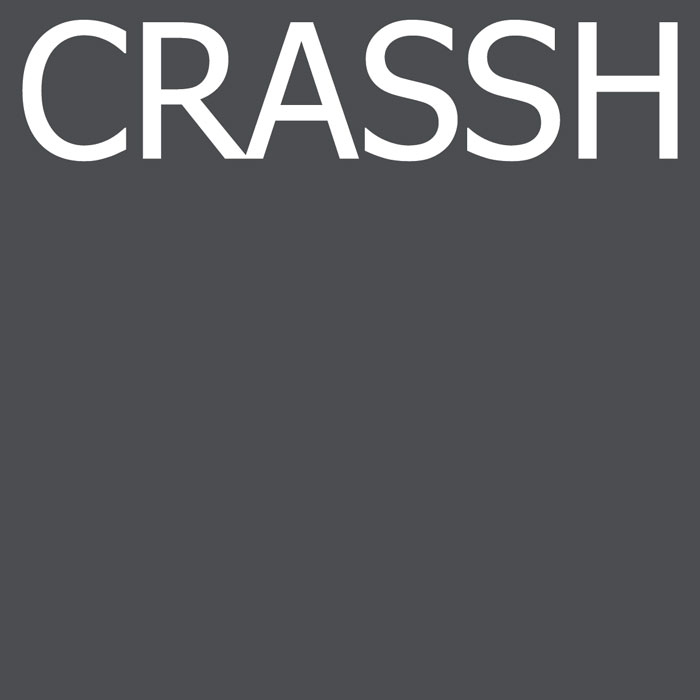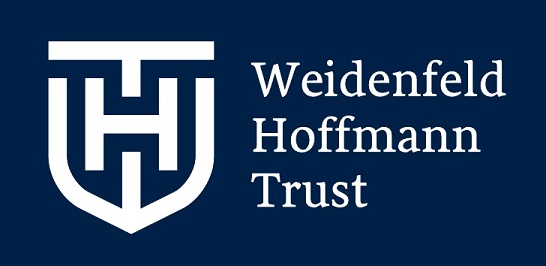| 30 Apr 2015 | 1:45pm - 5:30pm | Darwin Room, The Pitt Building | |
- Description
- Programme
- About the Professorship
Description
The event is free to attend but registration is required. To book your place please click here or use the online registration button.
CRASSH Humanitas Vistitng Professor in Chinese Studiies, Xu Bing, will give two lectures and participate in this concluding symposium.
Confirmed speakers
Professor Joshua Jiang (Birmingham City University)
Dr Wenny Teo (Coutauld Institute)
Dr Ros Holmes (University of Oxford)
Dr Shane McCausland (SOAS)
Dr Xiaofan Amy Li (University of Oxford)
Professor Vimalin Rujivacharakul (University of Delaware)
Other events in this series:
Lecture 1: Monday 27 April The Reactivation of Tradition
Talk and Reception: Tuesday 28 April Xu Bing at the Fitzwilliam Museum
Lecture 2: Wednesday 29 April The Energy of Reality and the Creativity of Art
For administrative enquiries please contact Michelle Maciejewska.


Programme
| 1.45-2.00pm 2.00-3.00pm | Registration Session 1: The Urban Landscape An Era without Memories Joshua Jiang (Director, Centre for Chinese Visual Arts, School of Art, Birmingham University) The talk will provide a unique perspective on the experience and appearance of cities in China – the histories they have destroyed and the heritage, memories, and futures being invented in them. It treats cities as a regime of visibility and seclusion. But most of all it offers insiders’ visual responses to the experience of fast urbanisation in the often disturbing photographic images of artists who are living through it. Unveiling the most recent development of contemporary photography in the particular context of China’s ‘revolutionary’ urban development, it will discuss artists’ visual reflections on the rapid changes, their imaginations through the surreal experiences, and, the significance of photography in the unprecedented era of social, ideological and cultural transformation. Architectural Mockery and Traditional Chinese Crafts Vimalin Rujivacharakul (Associate Professor, Department of Art History, University of Delaware) This paper offers a critical examination of contemporary foreign and Chinese-born architects who, during the 2000s, initiated a new architectural trend in China by incorporating translated patterns of traditional Chinese crafts into their building designs. The paper focuses on Ma Qingyun, Dean of the School of Architecture at the University of Southern California, who played a major role in disseminating the idea of incorporating translated Chinese crafts' patterns to international star architects, among whom were Rem Koolhaas and Jacques Herzog & Pierre de Meuron, designers of the CCTV Headquarters and the Beijing Olympic Stadium, respectively. The key questions I ask in this paper are, what are the criteria that distinguish traditional crafts from the non-traditional ones and whether their use on contemporary architecture really allow the revitalization of Chinese traditions in a contemporary setting? This paper, based on interviews over six years with Ma Qingyun, traces his life and career from Shaanxi and Tsingua University to the USA and back again to China, in order to unfold layers of international design politics in relation to the emergence of new China and post-millennium Chinese architecture. |
| 3.00-3.15pm | Tea/coffee break |
| 3.15-4.15pm | Session Two: The Question of Frames Between the mountains and the seas: animating contemporary china Ros Holmes (Junior Research Fellow in Art History, Christ Church, Oxford) In 2006 the artist Qiu Anxiong (b. 1972) began work on “The New Book of the Mountains and the Seas” a three channel video animation whose third instalment is due to be released in 2015. Qiu’s video creatively combines elements of the pre-Qin Dynasty (ca. 221-207 BCE) classical Chinese text Shan Hai Jing “Book of the Mountains and the Seas” with explicit references to contemporary political, social, and ecological concerns. Tracing the evolution of Chinese society from the agricultural through the post-industrial to the global, the video subjects the modern history of China to close scrutiny. Created using thousands of monochrome acrylic canvases, which were individually photographed and digitized using stop-motion techniques, Qiu’s animated narratives play with the formal power of acrylic to mirror the traditional practice of ink painting. Through a close reading of this work, this talk examines the recent trend for combining digital media technologies with a retrospective look at China’s cultural past, highlighting how so-called traditional aesthetics are frequently being re-animated as a means to reflect on the restive reality of contemporary China.
Living tradition in the frame Shane McCausland (Reader in the History of Art of China, Department of the History of Art and Archeology, School of Oriental and African Studies, London) Intellectual artists in pre-modern China looked upon their own lineage of painting as a living tradition, one rejuvenated even as it was reformed in transmission, such that it would remain fresh while seemingly permanent monuments hewn out of the most hard-wearing stone crumbled. Drawing upon the themes raised by Xu Bing in his lectures, this paper will consider ways in which contemporary artists in China consciously or otherwise reframe tradition, for example through their handling of media that enable scrolling and framing effects and also in terms of form and content, such as the use of landscape to create affective situations or the lyric treatment of lines and strokes from traditional calligraphy. |
| 4.30-5.30pm | Session Three: Chinese Art in Global Contexts Connecting with Chinese Antiquity: the case of 20thC Francophone writers and artists Li Xiaofan (Randall MacIver Junior Research Fellow,St Anne's College, Oxford) This talk examines how twentieth-century Francophone writers and artists encountered Chinese antiquity and drew inspiration therefrom. I focus on three artistic figures that are representative of three different ways of engagement: firstly, the Polish-French painter Balthus, who, inspired by Daoist literature as well as Chinese ink and wash paintings, explored the theme of dreams in a way different from dominant Surrealism, and innovated oil landscape painting; secondly, the Belgian-French poet and artist Henri Michaux, who engaged extensively with the Chinese aesthetic tradition and created iconotexts that integrated elements of calligraphy, writing, and abstract art; thirdly, the contemporary French writer Pascal Quignard, for which the complexity of classical Chinese language and argumentation, especially that of Gongsun Long, offered new ways to think about the nature of language in a multi-lingual and culturally eclectic world. Finally I argue that the case of these artistic figures allows us to understand how Chinese antiquity is not only of interest and significance for modern and contemporary China. Ancient Chinese culture—its texts, visual culture, and intellectual traditions—was gradually globalised in Europe trans-historically and trans-culturally from the seventeenth to twentieth centuries, and lives on posthumously, through the creation of connections between past and present by diverse aesthetic and cultural metamorphoses. It’s not funny: making sense of humour in contemporary Chinese art Wenny Teo (Manuela and Iwan Wirth Lecturer in Modern and Contemporary Asian Art, Courtauld Institute) In November 2014, China’s media regulators issued an official statement prohibiting the use of wordplay in television and advertising, on the grounds that such acts ‘violate China’s cultural traditions.’ This was arguably a reaction against the proliferation of politically subversive puns and rebuses circulated online by Chinese netizens, who routinely exploit the comedic potential inherent to the homophonic and ‘ideographic’ properties of the Chinese language to challenge state control over social and political discourse. While the edict made it clear that the Chinese state does not find such plays on words and images funny whatsoever, it also served to underscore the power of visual/verbal humour as a means of socio-political critique and resistance. This paper looks at how Chinese artists have engaged with humorous forms of visual/verbal play, performativity and parody by mapping out a genealogy of such practices from the late 1980s to the present day, focusing on the work of Xu Bing, Wu Shanzhuan, Ai Weiwei, Song Ta, Hu Xiangqian and Wu Junyong. Following Henri Bergson’s suggestion that laughter is not only a collective activity but one that has a distinct social function, it first historicises and questions the efficacy of visual/verbal humour as a means of socio-political critique in a specifically Chinese context, before focusing on how issues of cross-cultural intelligibility and translatability play out in the wider arena of the transnational online public sphere. It questions the level of knowledge global audiences must have of Chinese culture in order to be ‘in on the joke’, and explores the roles that the global art market, art institutions and the international mass media play in making sense of humour in contemporary Chinese art and visual culture. |
About the Professorship
The Humanitas Chair in Chinese Studies has been made possible by the generous support of Sir David Tang.
The Humanitas Chair in Chinese Studies will gather together academics and graduate students from different disciplines across the arts, social sciences and humanities with a research interest in China.
Previous Humanitas Visiting Professors in Chinese Studies
2013-14: David Derwei Wang (Edward Henderson Professor in Chinese Literature at Harvard University, Director of CCK Foundation Inter-University Center for Sinological Studies, and Academician, Academia Senica)
2012-13: Chen Yung-fa (Modern History Institute of the Academia Sinica, Taipei, Taiwan)
2011-12: Wu Hung (Harrie A Vanderstappen Distinguished Service Professor in Art History and East Asian Languages and Civilizations, University of Chicago)
Standing Committee
Hans van de Ven (Faculty of Asian and Middle Eastern Studies)
Susan Daruvala (Faculty of Asian and Middle Eastern Studies)
Adam Chau (Faculty of Asian and Middle Eastern Studies)
Boping Yuan (Faculty of Asian and Middle Eastern Studies)
Uradyn Bulag (Social Anthropology)
Hosting College
St Catharine's College

